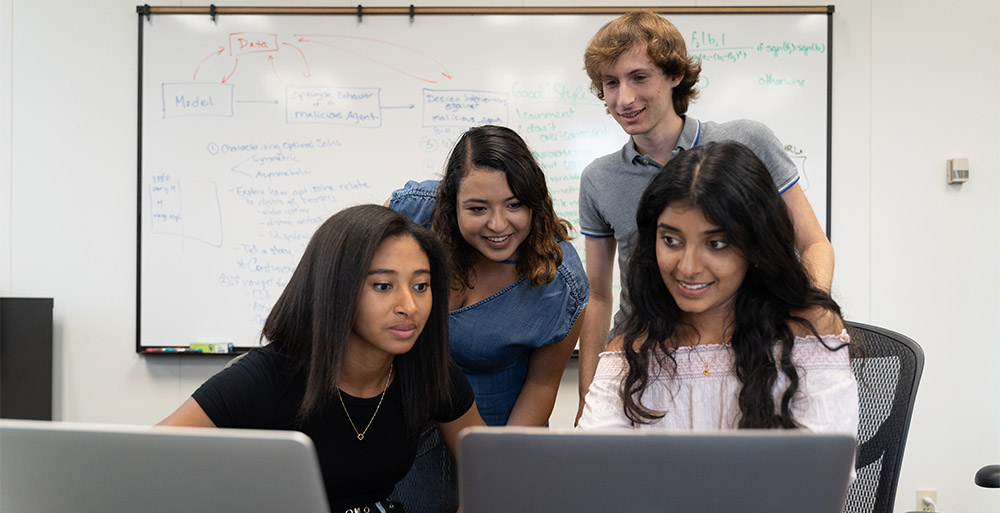Fighting Fake News
September 16, 2019
How is false information spread on social media and how might it be stopped? Harvey Mudd researchers spent this summer trying to understand the mechanisms by which fake news and/or biased news articles are propagated, and how their spread might be detected and deterred.
Directing the project is Susan Martonosi, Professor of Mathematics and an expert on public sector applications of operations research and management science.
Mathematics students Daniela Elizondo ’21, Bhavana Bheem ’22, Deyana Marsh ’21, and Steven Witkin ’20 (Johns Hopkins University) began with a literature review, learning about how people read and interact with news, how they share it and why fake news is prevalent. They were able to obtain a set of Twitter data containing tweets that focused on political content during the time of the 2016 presidential election. Using a probability model developed last year by Martonosi and her collaborator, Professor Banafsheh Behzad of CSU Long Beach, the 2019 team validated the model with real data to assess whether the model is indeed representative of how people are sharing news sources on social media.
“This work will provide insights into the optimal characteristics of biased and/or ‘fake’ news, which can then be used within a game theoretic framework to develop defensive strategies,” said Martonosi.
The team’s model has three main components: bias of a single article, truthfulness of a single article and belief of a single reader.
“In this model, we make a few assumptions: If the bias of the article is closely aligned with the belief of a reader, we think the probability of propagation will increase. If the truthfulness of the article also increases, we assume the probability increases,” explained Deyana Marsh ’21.
“We are kind of like detectives looking for evidence,” said Bhavana Bheem ’22. She recalled that during the literature review, the team read about how fake news affected the 2016 presidential election and how it is currently affecting voters and the political sphere. “Our politicians are also being affected by it,” said Bheem. “The fact that this is changing our leaders—what they’re thinking, what they are talking about—is a little upsetting and a little scary at the same time. Hopefully if we’re able to finish this model, understand how fake news propagates and are able to intervene, we might be able to change our political sphere to go back to talking about truthful [topics] and having real debates and conversations that are effective.”
In addition to potentially curbing the perpetuation of “fake news,” the researchers are thrilled to use skills learned in math classes such as operations research, intermediate probability, and data science to help them work on verifying their model to help in the real world.
“It’s interesting to take a lot of skills I’ve developed in the past couple years in math and computer science classes and actually use them to get real data and actually do things that can affect the real world. That’s rewarding,” said Daniela Elizondo ’21.
The summer research project, titled “Modeling and Gaming the Propagation of Fake News in Social Media,” was funded by an a three-year NSF grant, “REU Site: Data Science in the Life Sciences, Environmental Science and Engineering,” as well as the Norman F. Sprague III, M.D. Experiential Learning Fund. It is a collaboration with Banafsheh Behzad, assistant professor of information systems at California State University, Long Beach. It’s a new research area for both Behzad and Martonosi.
